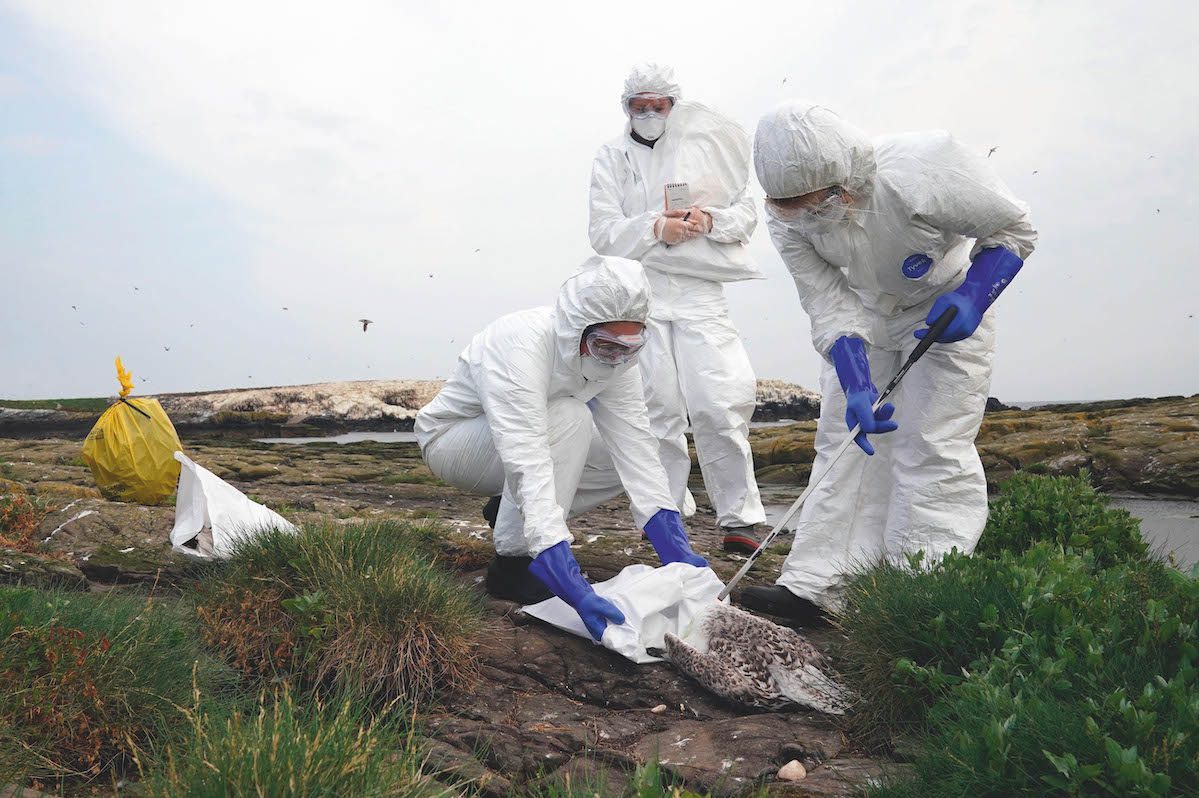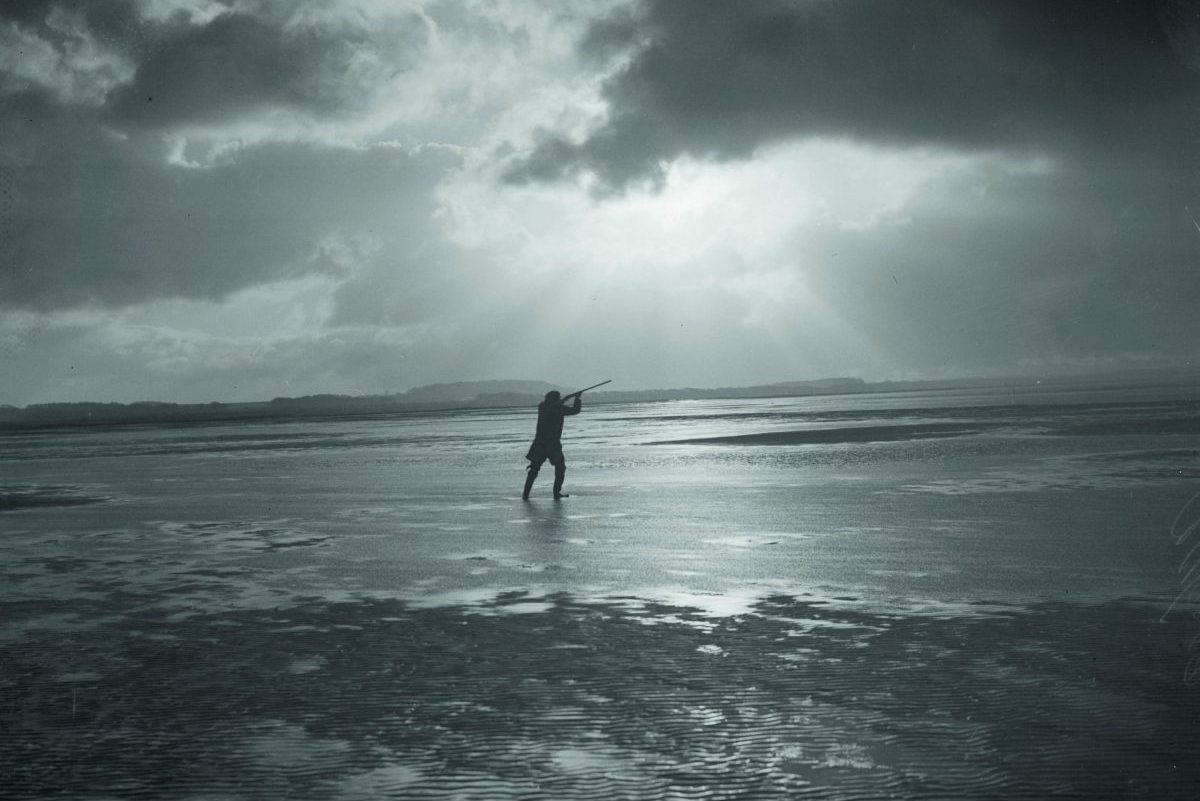In the HPAI bird flu battle, this is how wildfowlers can help
Richard Negus examines the latest guidelines on bird flu and reveals the role Guns can play in controlling the spread of the disease

Right about now, wildfowlers up and down the land will be avidly checking their waders for holes, re-hitching plumb lines on decoys and throwing a few dummies about for the dog. The season is upon us and, while the warmer days of September and October tend to pass by in a cloud of midges, mosquito bites and fowl-free skies, we all begin to dream about the onset of winter and the arrival of the migratory ducks and geese. The only fly in this season’s ointment is the spectre of highly pathogenic avian influenza (HPAI), more commonly known as bird flu.
HPAI – Bird flu
This seemingly rampant disease has been right on my doorstep this year.
My village was at the epicentre of one of the disease prevention zones. Local poultry and game farmers were forced to take extensive biosecurity measures, keeping their birds under cover for months on end. Owners of domestic flocks created prison camp-style structures in order to restrain their birds. The dystopian sight of Defra operatives in full hazmat suits knocking on doors to check on adherence to the rules was a near weekly occurrence.
It is sad to say that what was once believed to be a rare and seasonal disease now appears to be endemic in the UK. The only way that our poultry and game-rearing industries will survive is through rigorous disease prevention measures, such as we have undergone in my part of Suffolk.
HPAI not only decimates domestic birds, but many wild bird populations such as skuas, terns and gannets have, within weeks of contracting HPAI, shifted from sustainable population levels to becoming threatened with localised or even national extinction.
One of the tasks we wildfowlers should adopt this season, therefore, is to act as an early warning system, a vanguard of watchful, knowledgeable eyes that could make the difference between HPAI devastating British birdlife or ensuring timely controls are put in place. (Read how to get started in wildfowling.)

There is a risk dogs could pick up diseased birds, so wildfowlers are advised to carry latex gloves
Stricken birds
The Defra guidelines advise that people should call its hotline on 03459 335577 if they find one or more dead birds of prey or owls, three or more dead gulls or wildfowl, or more than five dead birds of any species. The wildfowling department at BASC echoes this advice and points out: “The wildfowling community are ideally placed to assist in reporting any findings of dead birds.”
The Government guide goes on to say that any dead or sick birds should not be handled. This, of course, creates something of a dilemma for fowlers. If I send my cocker, Mabel, out to retrieve and she comes across a sickly bird on the way out, the chances are she will pick that first. Therefore, there are good grounds to recommend keeping a pair of latex gloves and sterile wipes to hand, too, should you need to handle a stricken bird.
It is best to disinfect all kit that may have come into contact with birds suspected of suffering from bird flu. Defra may request to test any dead birds that you report. Where birds are not required for surveillance purposes, it is the landowner’s responsibility to safely dispose of the carcasses. Wildfowling clubs should have a protocol in place as to whose responsibility this is.
The disposal of suspected HPAI birds falls under animal by-product (ABP) category 1, meaning the carcass is classified as ‘high risk’ and must be incinerated at an approved plant.

Shooting flocks containing sick birds could cause them to move on, spreading HPAI to new areas
Other ways wildfowlers can help
As well as finding dead birds, wildfowlers should be on the lookout for HPAI symptoms in living fowl. Quite how these symptoms present themselves varies widely between species. Ducks and geese, in particular, show minimal clinical signs compared with waders and sea birds.
If a bird is seen suffering all or some of the symptoms listed on the Defra website, again the first course of action is to call Defra. There is, however, some level of disquiet over how responsive Defra is to reports on its HPAI hotline.
Dr Alex Lees, senior lecturer in conservation biology at Manchester Metropolitan University, found it was disinterested in his report of finding a number of Canada geese corpses and birds exhibiting HPAI symptoms on land owned by United Utilities this summer. He said: “[Defra] didn’t show any interest as it didn’t reach a critical threshold and they then failed to relay information to United Utilities as promised about corpse clean-up. In the end I had to go to the Defra office.”
Carcass testing
I asked Dr Lees what he believed should be happening to stem the spread of bird flu. He said: “What Defra needs to do is increase surveillance and carcass testing. In the event of clusters of cases, then we need to reduce disturbance to those bird populations from the public, including wildfowlers, such that we aren’t inducing movements between sites in sick birds.”
This point could have an impact on wildfowling, particularly goose shooting over stubbles and on crops. HPAI is spread from bird to bird by direct contact or through contaminated body fluids and faeces. Therefore, if sick birds are spotted within a flock, shooting should arguably cease. Continuing to shoot could move the flock on to fresh ground and into contact with birds that are not yet infected. HPAI can also be spread by contaminated feed and water, which could impact flightponds, particularly where wild ducks are joining reared birds.
Dr Lees added: “We have little or no idea how infections vary between species, and across individuals and populations, and have no idea whether things are going to get better or worse. Given the real risk to aviculture and to human health, we really need to be on top of this.”
Not only are wildfowlers in an important position to act as an early warning system to protect birdlife and human health, we are also helping the continuation of our sport by acting responsibly, informing the authorities of suspected HPAI cases and thereby reducing wherever possible further spread of the disease. There has been a reported case of HPAI in every week of 2022, from Shetland to Cornwall and Pembrokeshire to Norfolk.
While there is no reason to panic, it seems inevitable that migratory birds will bring more cases of HPAI with them this winter. It is essential, therefore, that those of us who wait with dog and gun on the foreshore play our part this season and help in stemming the tide of bird flu.








